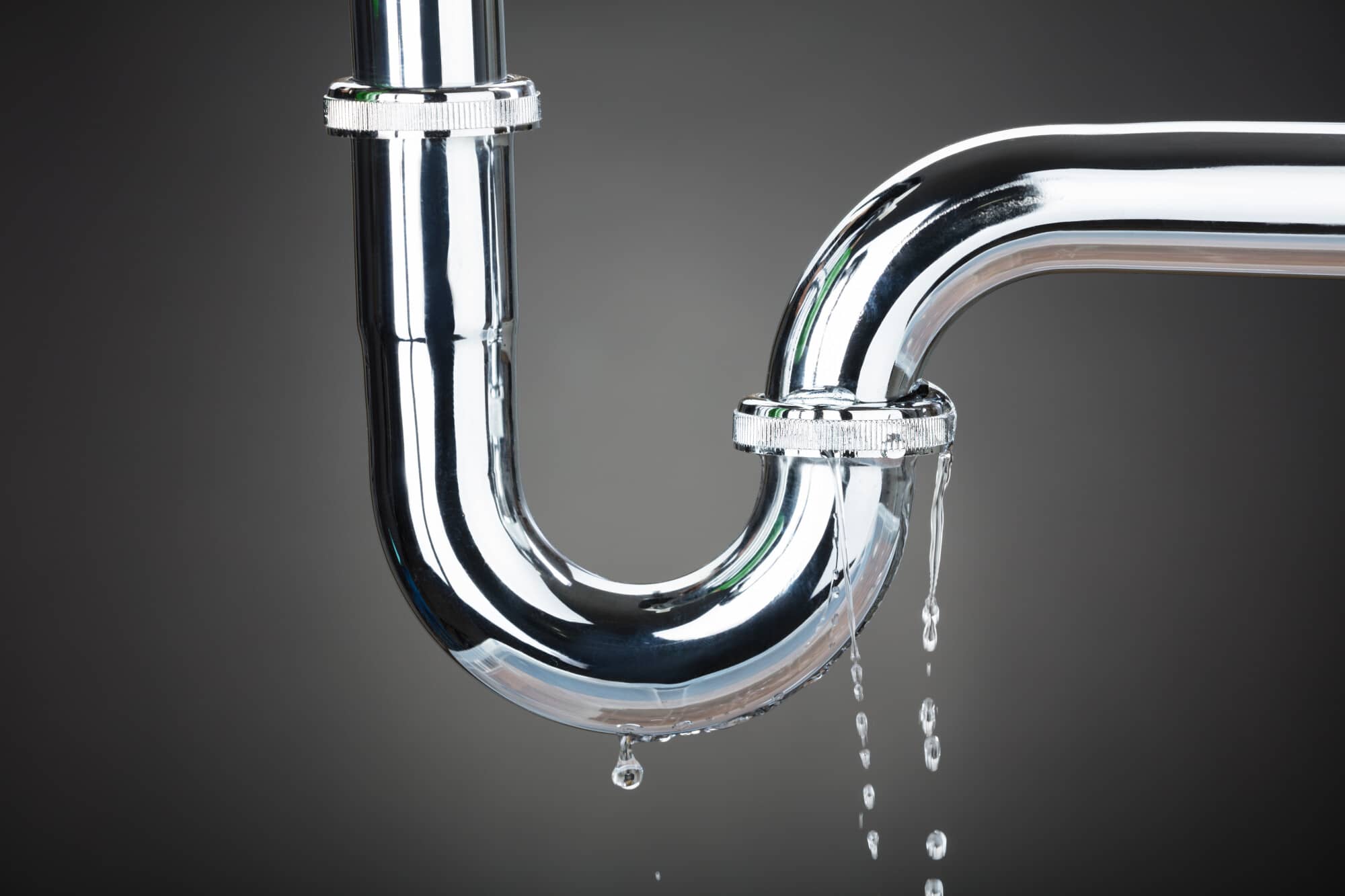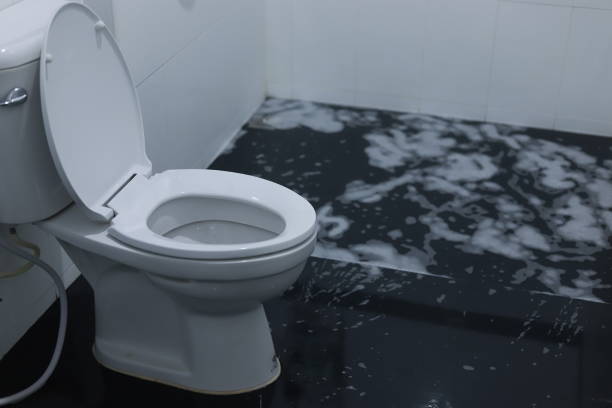What Triggers Water Deterioration in the Bathroom
What Triggers Water Deterioration in the Bathroom
Blog Article
What are your thoughts about How to Repair and Prevent Bathroom Water Damage??

Water damage often happens in the bathroom due to the water utilized daily. In some cases, the damages could be a little mold from the shower. Various other times, it's large damage on your floor. Whatever it is, it is always great to know the cause as well as avoid it before it happens.
This guide will undergo a few of the common reasons for water damage in the restroom. We will additionally examine what you can do to avoid these causes from harming your bathroom. Allow's dive in.
5 Typical Causes of Water Damage in Bathrooms
These are the usual factors you would have water damage in your bathrooms and also how you can spot them:
Ruptured or Leaking Pipelines
There are numerous pipelines bring water to different parts of your shower room. Some pipelines take water to the commode, the sink, the taps, the shower, and several various other areas. They crisscross the little area of the washroom.
Occasionally, these pipes might get rustic and also ruptured. Various other times, human activity can cause them to leak. When this occurs, you'll discover water in the edges of your restroom or on the wall.
To identify this, keep an eye out for bubbling walls, molds, or mold. Call an expert emergency plumbing professional to repair this when it occurs.
Fractures in your wall surface ceramic tilesv
Shower room wall surface floor tiles have actually been particularly made for that purpose. They protect the wall surface from dampness from individuals taking showers. Nevertheless, they are not unbreakable.
Sometimes, your bathroom wall surface ceramic tiles crack and also enable some moisture to leak into the wall surface. This can potentially destroy the wall surface if you don't take any kind of action. If you discover a fracture on your wall surface tiles, fix it immediately. Do not wait until it damages your wall.
Overruning bathrooms and also sinks
As human beings, sometimes we make errors that might create some water damage in the washroom. For example, leaving your sink faucet on can cause overflowing and also damage to various other parts of the washroom with wetness.
Additionally, a defective bathroom can cause overruning. As an example, a damaged commode manage or other parts of the cistern. When this takes place, it could damage the floor.
As soon as you see an overflowing sink or bathroom, call a plumbing technician to assist deal with it right away.
Roof covering Leakages
Often, the trouble of water damage to the shower room may not originate from the restroom. As an example, a roof leakage might create damages to the restroom ceiling. You can spot the damages done by checking out the water spots on the ceiling.
If you locate water spots on your ceiling, examine the roofing system to see if it's damaged. Then, call a professional to help resolve the issue.
Excess Moisture
It's amazing to have that long shower and also dash water while you hem and haw as well as act like you're performing, but sometimes these acts could cause water damage to your restroom.
Splashing water around can trigger water to head to edges and develop mold and mildews. Watch exactly how you spread excess wetness around, and when you do it, clean it up to stop damages.
Verdict
Water damage to your washroom can be aggravating. Nonetheless, you can manage it if you prevent several of the causes mentioned in this guide. Call an expert emergency plumbing technician if you notice any type of extreme damages.
Common Causes of Water Damage in a Bathroom
Water damage can appear virtually anywhere in your home, but bathrooms and basements are the two most common areas. It’s easier to spot causes and signs of water damage in an unfinished basement, but that doesn’t mean it’s any less severe to have water damage occur in your bathroom.
Spotting Signs of Bathroom Water Damage
The bathroom is probably the most common place where you’ll use water in your home. Because of this, there’s a relatively high risk of sustaining water damage. The longer water damage goes untreated, the worse it can get. Therefore, you need to know what signs to look for and deal with any damage as soon as possible.
There are often items like rugs, bottles, towels, and so on crammed in every corner of the typical bathroom, which can trap moisture and hide budding problems. But what usually causes the most water damage in a bathroom? How can you spot it, especially with so many items in the way? This article addresses several common ways to notice, prevent, or fix bathroom water damage.
A Recurring or Persistent Musty Odor
Wherever there’s water damage, you almost always find small spots of mold, or even a full-blown infestation. When you leave mold to thrive and grow, it creates a stinking, musty odor that’s pretty hard to miss. Don’t leave musty smells unaddressed—try to find the source so that you can have it repaired before more damage occurs.
Damaged Grout or Caulk
When these sealing agents fail, virtually nothing prevents water from seeping past the barrier, causing water damage and mold growth underneath wall and flooring tiles. Damaged showerheads, spigots, grout, or caulking, combined with excessive moisture, create the perfect environment for mold to thrive.
Loose Tiles or Spongy Floors
Moldy and water-damaged walls make it more difficult for tiles to stay in place, which can cause them to become loose. In addition, persistent moisture on a bathroom floor can result in water damage to the subflooring layer, causing it to degrade, lose integrity, and feel spongy.
Stubborn Growth
If there’s visible mold in your bathroom that you’ve removed more than once, the most likely reason it keeps coming back is a deeper infestation in the walls or floors. It’s critical to deal with this problem immediately to prevent further damage and new or worsening health issues.
https://advantaclean.com/blog/common-causes-of-water-damage-in-a-bathroom/

Common Causes of Water Damage in a Bathroom
Water damage can appear virtually anywhere in your home, but bathrooms and basements are the two most common areas. It’s easier to spot causes and signs of water damage in an unfinished basement, but that doesn’t mean it’s any less severe to have water damage occur in your bathroom.
Spotting Signs of Bathroom Water Damage
The bathroom is probably the most common place where you’ll use water in your home. Because of this, there’s a relatively high risk of sustaining water damage. The longer water damage goes untreated, the worse it can get. Therefore, you need to know what signs to look for and deal with any damage as soon as possible.
There are often items like rugs, bottles, towels, and so on crammed in every corner of the typical bathroom, which can trap moisture and hide budding problems. But what usually causes the most water damage in a bathroom? How can you spot it, especially with so many items in the way? This article addresses several common ways to notice, prevent, or fix bathroom water damage.
A Recurring or Persistent Musty Odor
Wherever there’s water damage, you almost always find small spots of mold, or even a full-blown infestation. When you leave mold to thrive and grow, it creates a stinking, musty odor that’s pretty hard to miss. Don’t leave musty smells unaddressed—try to find the source so that you can have it repaired before more damage occurs.
Damaged Grout or Caulk
When these sealing agents fail, virtually nothing prevents water from seeping past the barrier, causing water damage and mold growth underneath wall and flooring tiles. Damaged showerheads, spigots, grout, or caulking, combined with excessive moisture, create the perfect environment for mold to thrive.
Loose Tiles or Spongy Floors
Moldy and water-damaged walls make it more difficult for tiles to stay in place, which can cause them to become loose. In addition, persistent moisture on a bathroom floor can result in water damage to the subflooring layer, causing it to degrade, lose integrity, and feel spongy.
Stubborn Growth
If there’s visible mold in your bathroom that you’ve removed more than once, the most likely reason it keeps coming back is a deeper infestation in the walls or floors. It’s critical to deal with this problem immediately to prevent further damage and new or worsening health issues.
https://advantaclean.com/blog/common-causes-of-water-damage-in-a-bathroom/
As a passionate reader about How to Repair and Prevent Bathroom Water Damage?, I was thinking sharing that portion was a good thing. Are you aware of another individual who is enthusiastic about How to Repair and Prevent Bathroom Water Damage?? Take a moment to share it. We enjoy reading our article about How to Repair and Prevent Bathroom Water Damage?.
Fast response, call now! Report this page